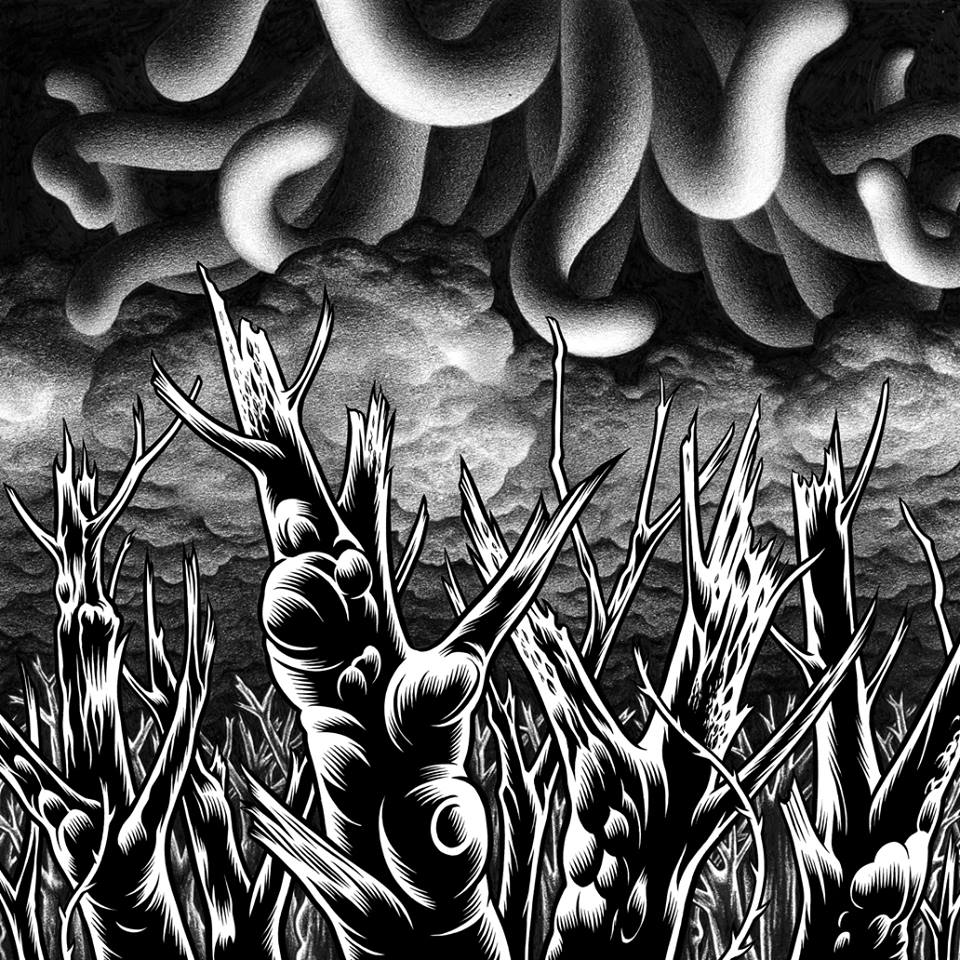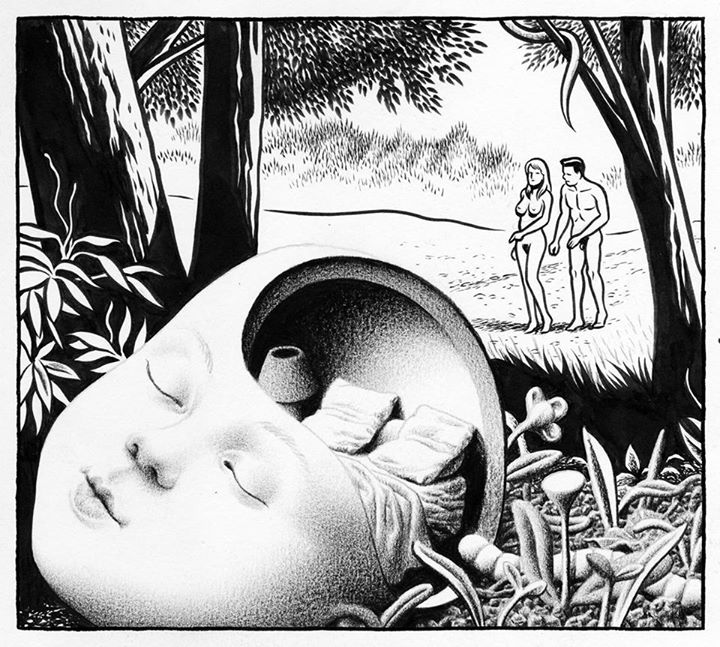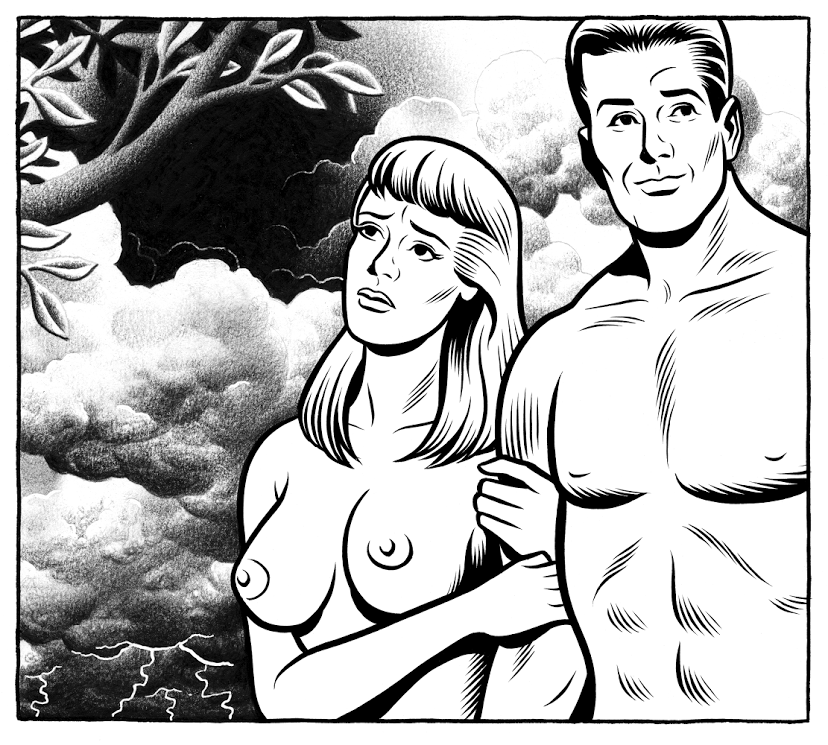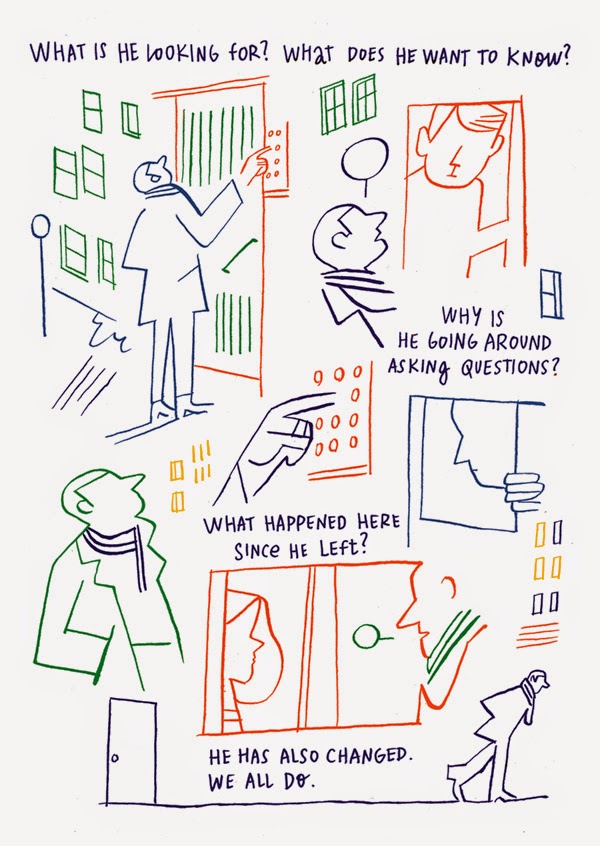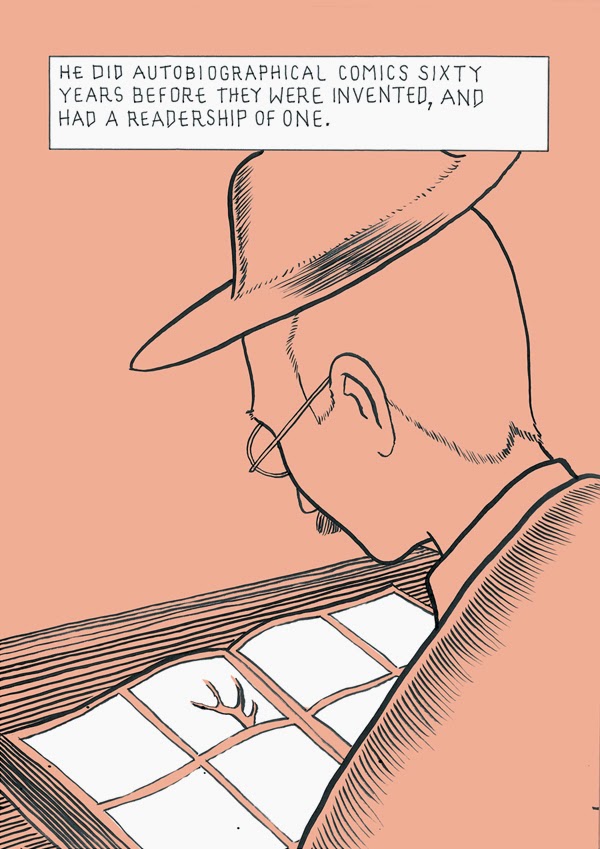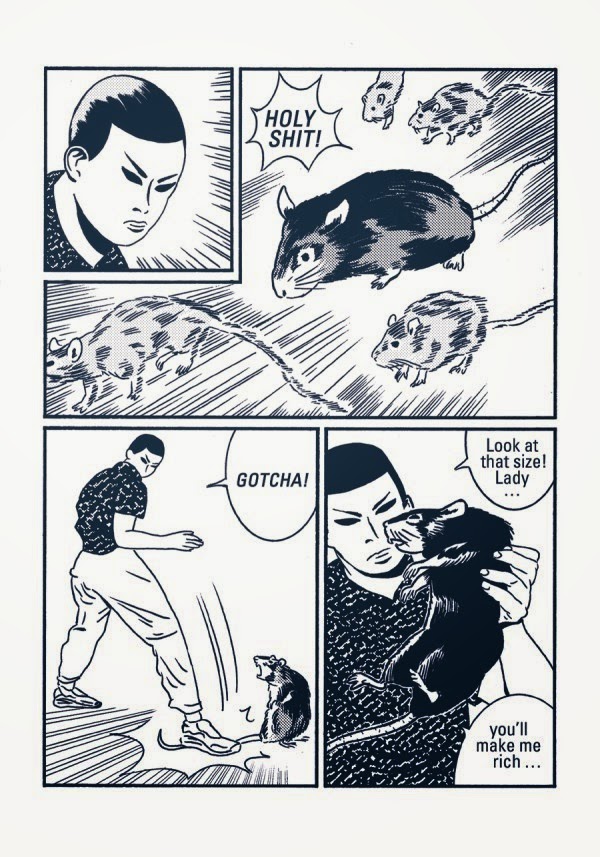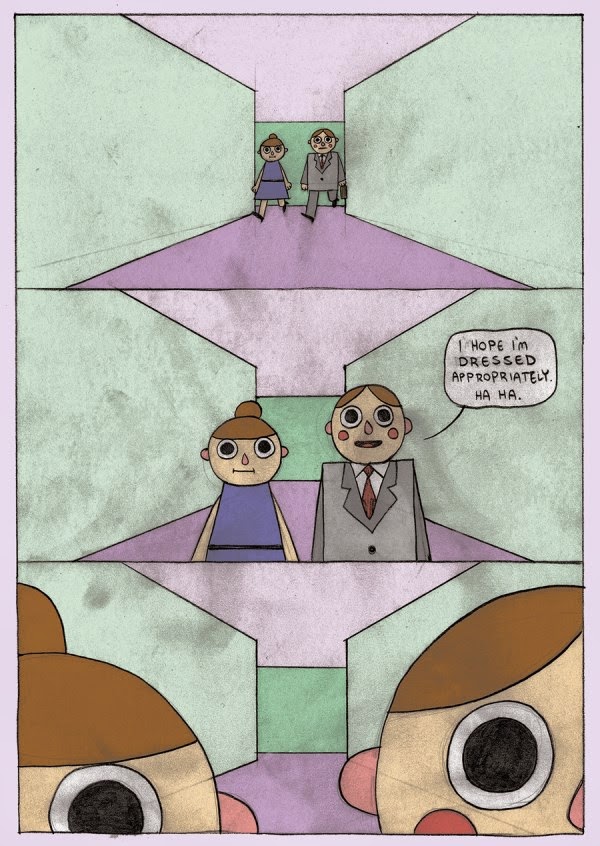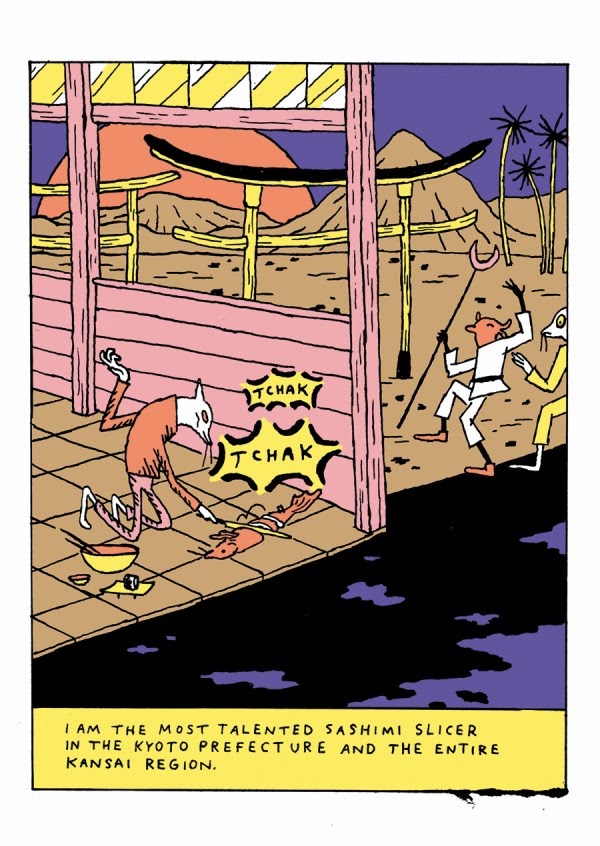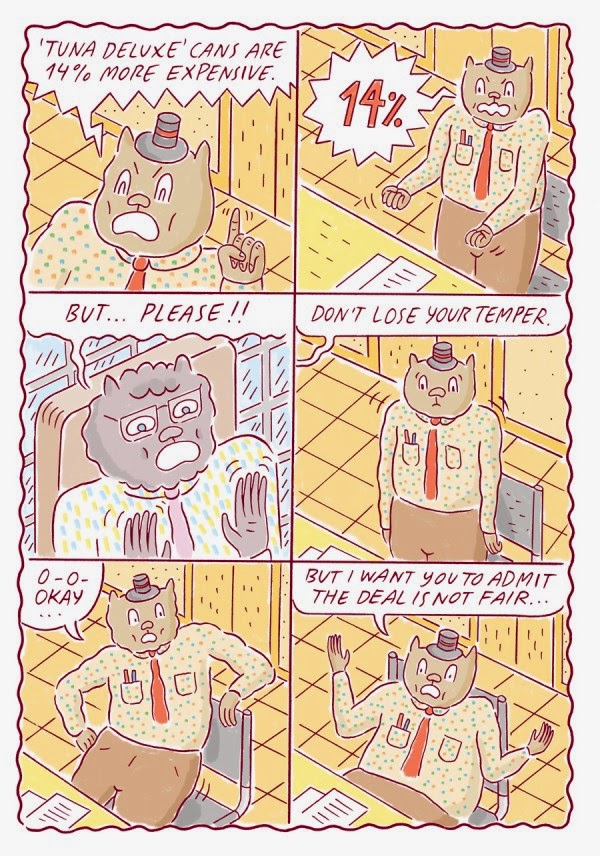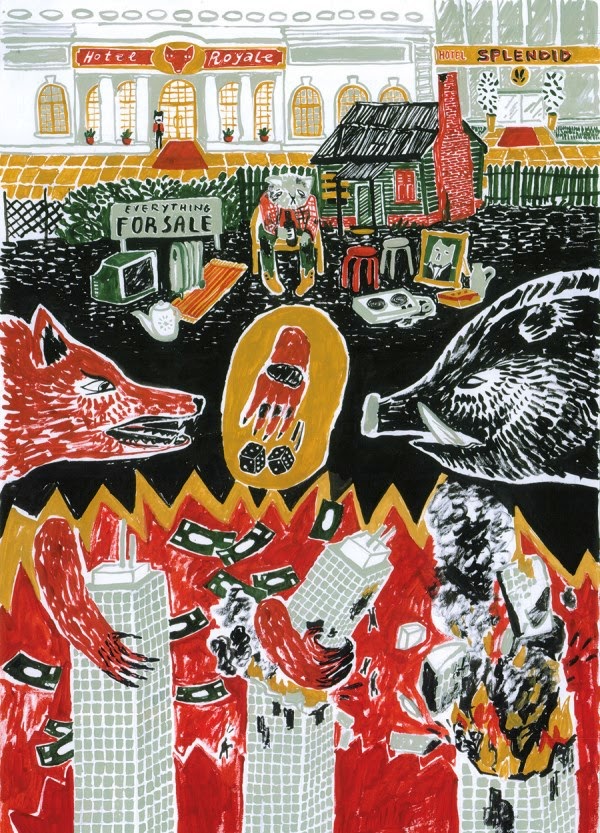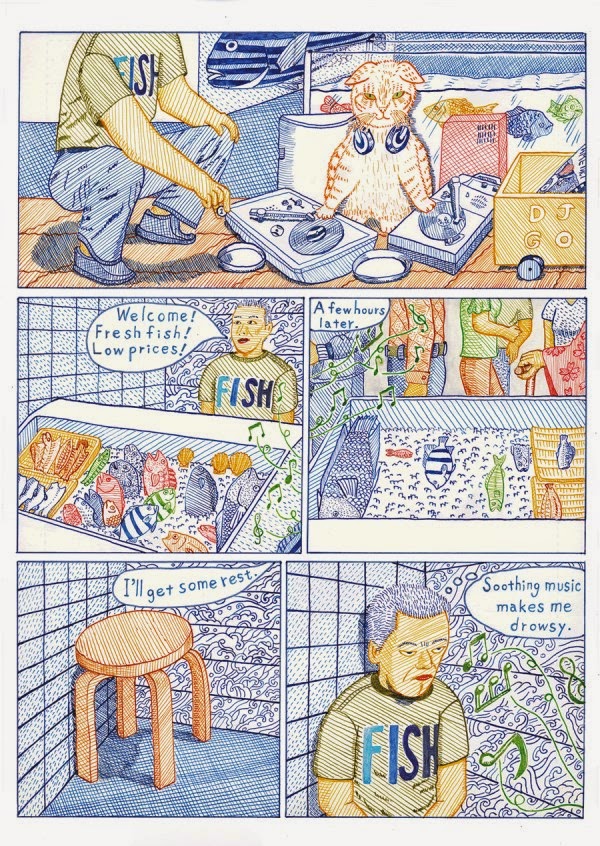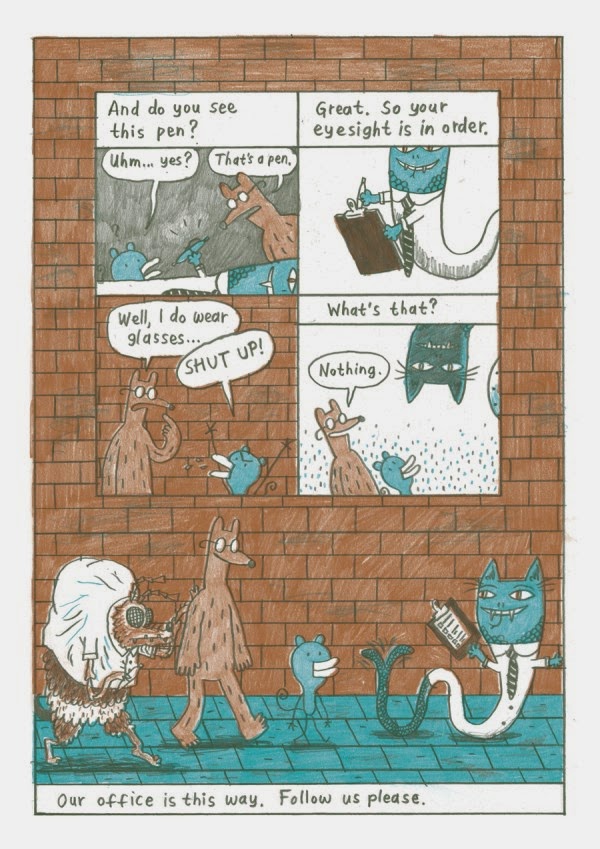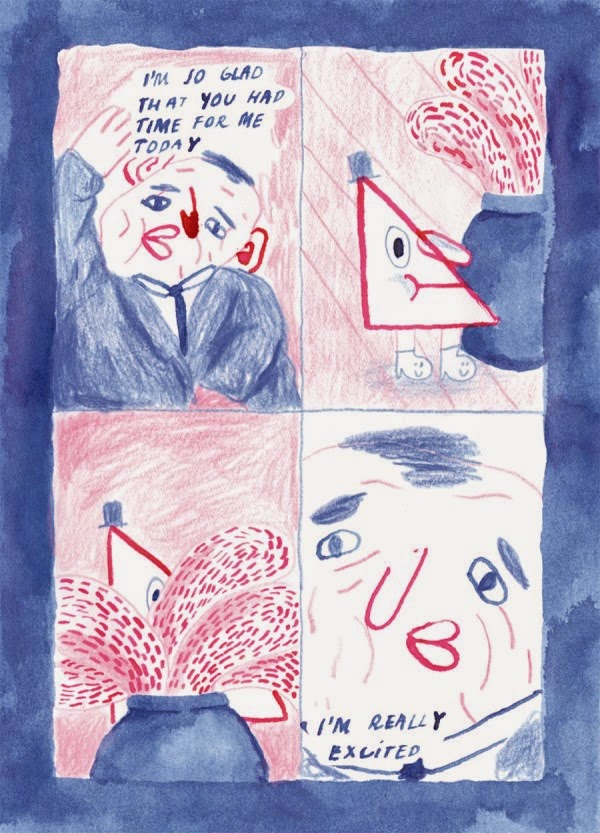“In the Garden of Evil”: a preview
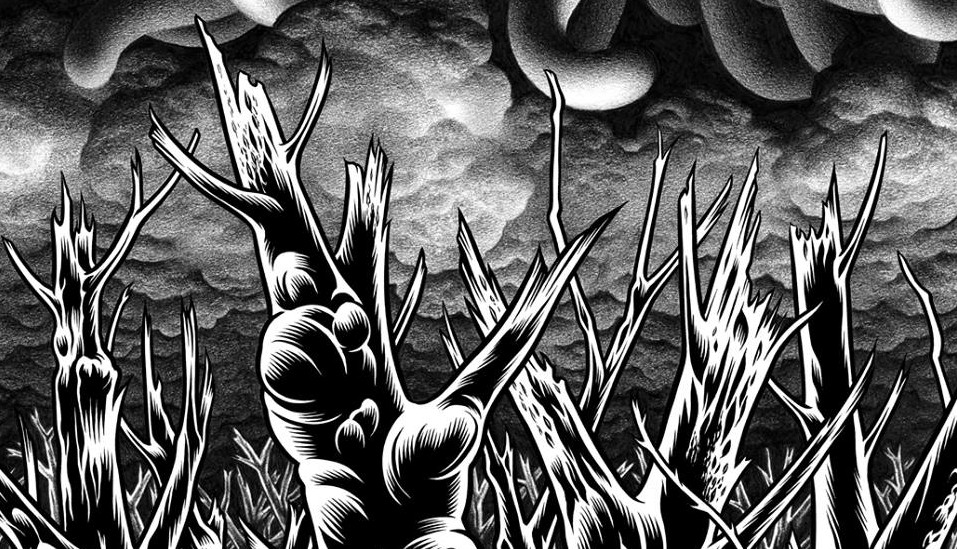
For the eight issue of Mon Lapin, the magazine published in France by L’Association, Patrice Killoffer summoned cartoonists as Philippe Druillet, Ludovic Debeurme, Lorenzo Mattotti and many others, creating a series of collaborative drawings, whose originals were exposed at the end of last year at the Galerie Anne Barrault in Paris. The wood was the theme of these works, so it was quite obvious that Killoffer had to call Charles Burns to start a fruitful collaboration. The works by Burns and Killoffer were inspired to the Garden of Eden and now they’re reprinted in a collection by Alvin Buenaventura’s Pigeon Press. In the Garden of Evil will be a hand-bound, 28-page, 7.25 x 7.25 art book, published in 1000 numbered and signed copies including a 7″ flexidisc by Will Oldham. The book will debut at the Toronto Comic Arts Festival next 9 and 10 May, at the presence of the two authors. After the show, Buenaventura will sell on line 200 of the 1000 copies, at a still unknown price.
At the moment the only official image released by Pigeon Press is the one above, but I think we’ll find in the book all the drawings from Mon Lapin, including the ones exposed at the Galerie Barrault (you can see them in this report posted on Le Blog de Shige) and these below.
Portuguese comics: š! #20
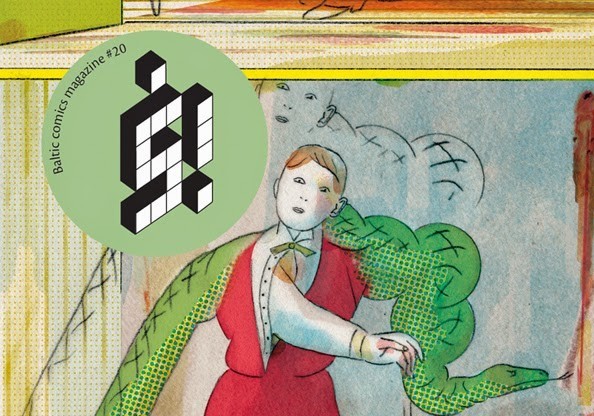
Assembled by David Schilter and Sanita Muižniece with the help of guest editor Marcos Farrajota of Portuguese collective Chili Com Carne, the 20th issue of Latvian anthology š! collects comics about disquiet, a theme taken after the Livro do Desassossego by Fernando Pessoa. It’s interesting how every issue of š! can remember us what comics are all about and what people can do with comics, showing several possible approaches to this medium. Here we’ve artists like Amanda Baeza, Filipe Abranches and Paulo Monteiro working on a fixed grid of panels, others like Rafael Gouveia and Daniel Lima who adapt literary works by Bernardo Soares and Paul Ableman, while Cátia Serrão and João Fazenda play with space, form and color and Bruno Borges creates a plot starting from doodles.
The panel is not the rule in š! and so it’s absolutely usual over here to see comics made of full-page illustrations or even of photographs, like the ones by Tiago Casanova and Joana Estrela. The six-page contribution from twenty-five years old Estrela is one of the best in the anthology, brilliantly combining pictures from a fifties-style movie with a text that pinpoints the disquietness of today’s young cartoonists. She is one of the younger artists in the book, while the oldest one is Tiago Manuel, author of a series of stunning narrative illustrations recalling old medicine books. He’s also a typical Portuguese character, probably overpassing the same Pessoa with his 25 heteronyms projects. The shadow of Pessoa is evident in a lot of works and especially in Francisco Sousa Lobo’s, where the author of The Dying Draughtsman graphic novel builds the figure of Fausto M. Fernandes, a mysterious pioneer of Portuguese comics. I think this is the best work in the issue – it perfectly fits the theme of the anthology portraying a problematic person, it is poetic but down to earth, it moves questions about comics, autobiography and art’s nature.
After closing the book we’ve a clearer idea of comics from Portugal – or perhaps we’ve no idea – after all how two Chilean sisters living in Lisbon (Amanda and Milena Baeza), a precarious social scientist with a captivating line (Daniel Lopes), a photographer (Tiago Casanova) and a linguistics scholar (Cátia Serrão) can create a shared style? There a lot of “lone wolves” here – as Marcos Farrajota states in his introductory essay – and maybe this is the beauty of Portuguese comics and of this art in general. More than being a cohesive overview of a scene, this issue of š! is a dynamic history of a medium in a single country and of its struggle to come out of people’s rooms, houses and studios.
š! #21 preview

A nice cover by Belgian artist Brecht Vandenbroucke – well known for his White Cube, published by Drawn and Quarterly – depicts business from one of its cruelest sides. And it’s Business Time the title of the 21st issue of š!, available for International Workers Day (1st of May), with the usual mix of upcoming Latvian artists and cartoonists from all over the world. Among this issue’s contributors, I would recommend the work of Argentinian Berliac (already seen in other š! and in the beautiful mini kuš! #19, Inverso), Polish author of Adventures on a Desert Island Maciej Sieńczyk, Chris Kuzma (Canada), Roope Eronen (Finland), Sergi Puyol (Spain).
Inside you’ll also find comics by Ann Pajuväli (Estonia), Anna Haifisch (Germany), Anna Vaivare (Latvia), Disa Wallander (Sweden), Harukichi (Japan), Jeroen Funke (The Netherlands), König Lü.Q. (Swiss), Lai Tat Tat Wing (Hong Kong), Laura Ķeniņš (Canada/Latvia), Līva Kandevica (Latvia), Lote Vilma Vītiņa (Latvia), Olive Booger (France), Rūta Briede (Latvia) and Zane Zlemeša (Latvia).
Perfect bound, 164 color pages, š! #21 is shipped worldwide for $14. You can order it here. Here are some images from the book.

